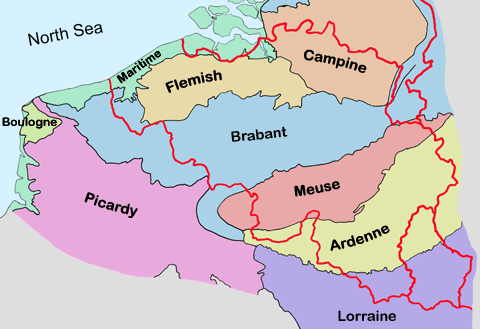
Study area - The Campine district
The Campine district (Camp.) also corresponds to large deposits of Quaternary sand and is similarly strongly urbanized and industrialized. The gravel terraces of Pleistocene origin in the eastern part reach 100 m elevation and, until World War II were locally covered by large dunes and ericaceous heaths. Almost all those semi-natural habitats have disappeared together with their highly characteristic lichen flora. As in the Flemish district, there is no natural rock outcrop and woodlands are artificial.